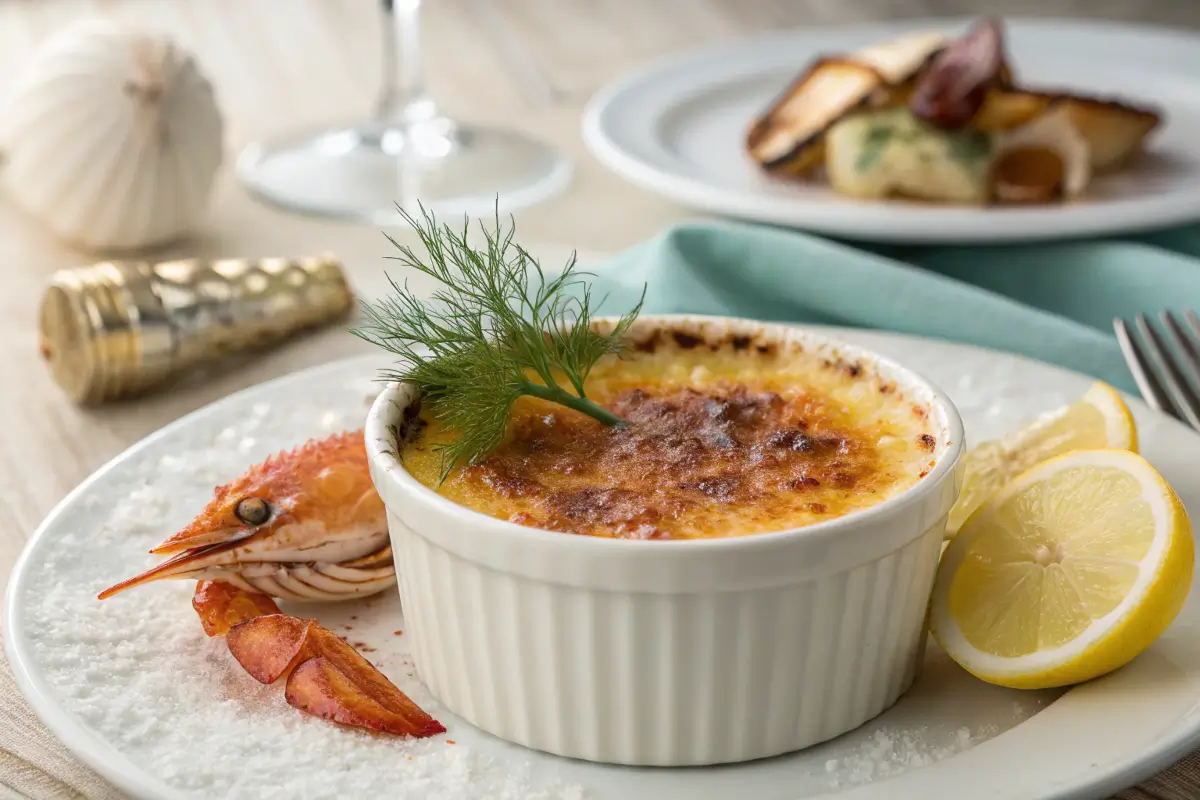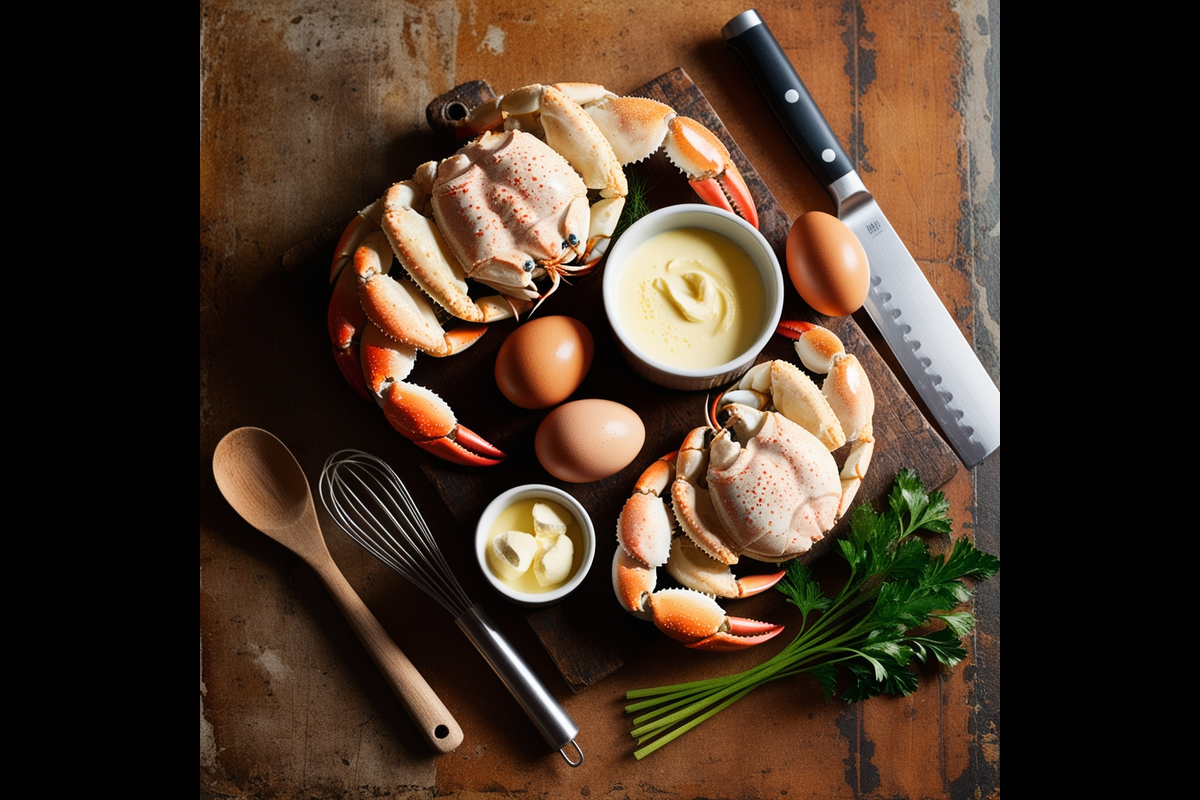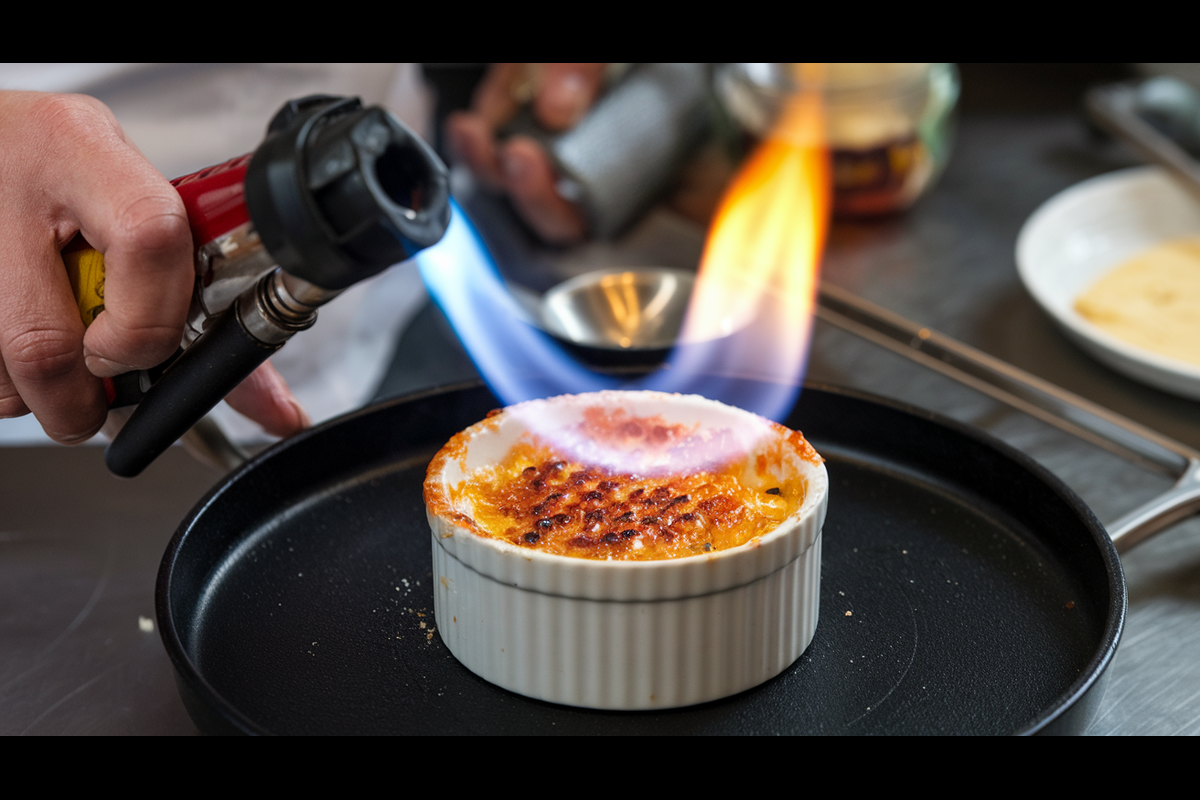Crab brûlée is an elegant, savory twist on the classic crème brûlée. This culinary gem combines the creamy, decadent texture of traditional brûlée with the fresh, rich flavor of crab, creating an appetizer or light main dish that wows the palate. In addition, crafting the perfect crab brûlée at home can be a fun and rewarding experience, especially when entertaining guests. Thus, this guide will walk you through every step, from selecting the right ingredients to Make the Perfect Crab Brûlée Recipe at Home. Let’s dive in!
Introduction to Crab Brûlée
What is Crab Brûlée?
Crab brûlée is a savory reinterpretation of the iconic crème brûlée. Instead of sweet custard and sugar, this version features fresh crab meat and a rich, seasoned custard base. While the caramelized sugar topping remains, this dish boasts a more umami-rich profile, making it a perfect choice for seafood lovers.
Crab brûlée can be served as an appetizer, an amuse-bouche, or as the centerpiece of a seafood spread, making it versatile enough for any occasion.
How Crab Brûlée Differs from Traditional Crème Brûlée
While traditional crème brûlée is sweet, crab brûlée leans into savory flavors. The custard is infused with crab meat, herbs, and spices, making it rich and full of depth. Though both dishes share the same creamy consistency and the signature caramelized topping, crab brûlée’s savory ingredients make it a unique and sophisticated alternative.
Why Make Crab Brûlée at Home?
Making crab brûlée at home comes with a few key benefits:
-
Control Over Ingredients: You can select the freshest crab and tailor the seasonings to your preference.
-
Cost-Effective Luxury: Eating out for dishes like crab brûlée can be pricey, but making it yourself saves money.
-
Impress Your Guests: The elegant presentation and unique flavors will certainly make a statement at any gathering.
Whether you’re an experienced cook or a beginner, mastering crab brûlée is easier than you might think. Let’s dive into the ingredients you’ll need to get started!
Essential Ingredients for the Perfect Crab Brûlée
Key Ingredients for Crab Brûlée
To create the perfect crab brûlée, start with high-quality ingredients:
-
Fresh Crab Meat: Lump or jumbo lump crab meat works best due to its sweet, delicate flavor. Fresh crab will ensure your dish tastes vibrant and flavorful.
-
Heavy Cream: This creates the rich, smooth custard. If you prefer a lighter version, a mix of cream and whole milk can work, though it may alter the texture slightly.
-
Seasonings: Aromatic herbs such as dill, chives, and a hint of cayenne pepper or nutmeg bring the flavors together, complementing the crab’s natural sweetness.
-
Sugar: You’ll need fine granulated sugar for caramelizing the top to perfection.
Ingredient Selection Tips for Optimal Flavor
-
Fresh Crab Meat: Always purchase crab from a trusted seafood market to ensure quality. The meat should have a sweet, fresh aroma and firm texture.
-
Cream: Use full-fat cream for the best custard consistency. Avoid lower-fat options as they can result in a less creamy texture.
-
Seasoning: Taste as you go to ensure a balanced flavor. A pinch of salt and a careful selection of herbs can make all the difference.
For a delightful pairing, check out our Grilled Chicken Wraps—they go beautifully with this dish!
Tools and Equipment Needed for Crab Brûlée
Must-Have Kitchen Tools
To recreate restaurant-quality crab brûlée at home, you’ll need a few key tools:
-
Ramekins: These small, heat-resistant dishes are perfect for individual servings.
-
Culinary Blowtorch: Essential for caramelizing the sugar topping to a crisp, golden finish.
-
Baking Tray: A high-sided tray for creating a water bath, which ensures even cooking of the custard.
-
Whisk and Mixing Bowls: These are necessary for blending the custard base.
Optional Tools for a Better Experience
-
Kitchen Thermometer: Helps maintain the ideal temperature for the custard (170-175°F).
-
Microplane Grater: For grating fresh nutmeg or citrus zest as a garnish.
With these tools in hand, you’re ready to move on to the preparation!
Step-by-Step Guide to Making Crab Brûlée
Preparing the Ingredients
Start by prepping your crab meat. Remove any shell fragments or cartilage, then pat it dry to remove excess moisture, which could affect the texture of the custard.
In a mixing bowl, whisk together the egg yolks, heavy cream, and your chosen seasonings, such as dill, cayenne, and salt. Whisk until smooth to ensure a silky custard base.
Cooking the Custard Base
Transfer the custard mixture to a saucepan and warm it over low heat, stirring constantly. Aim for a creamy consistency—don’t let it boil. The custard should be thick enough to coat the back of a spoon.
Assembling and Baking the Brûlée
Fill the ramekins with crab meat, about halfway. Then, pour the custard mixture over the crab, leaving a little room at the top to prevent spillage.
Place the ramekins in a baking tray filled with hot water (a water bath). This helps to evenly distribute heat during the baking process. Bake at 325°F (160°C) for 35–40 minutes or until the custard is just set but still slightly wobbly in the center.
Caramelizing the Sugar Topping
Once the brûlée has cooled, sprinkle a thin, even layer of granulated sugar over the surface. Use a culinary blowtorch to caramelize the sugar until golden and crisp. Keep the torch moving for an even result.
For additional ideas, check out Golden Corral Dinner Rolls, which pair perfectly with this dish.
Serving and Pairing Suggestions
How to Present Crab Brûlée
Presentation is key. Arrange the ramekins on elegant plates and garnish with a sprig of fresh dill or a lemon wedge. A sprinkle of sea salt flakes can accentuate the sweetness of the caramelized sugar.
Ideal Pairings for Crab Brûlée
-
Wine: A crisp Sauvignon Blanc or a dry Chardonnay is a great choice.
-
Salad: A light salad with citrus vinaigrette or a cucumber-dill salad helps balance the richness of the brûlée.
If you’re looking for a complete seafood menu, try starting with our Sourdough Dutch Baby. By doing so, you can create a truly unique dining experience.
Common Mistakes to Avoid When Making Crab Brûlée
Overcooking or Undercooking the Custard
Be mindful of the cooking time—overcooked custard can become rubbery, while undercooked custard remains runny. Use a water bath and check that the custard is firm at the edges but slightly wobbly in the center.
Using Inferior Quality Crab Meat
The quality of your crab meat is vital to the dish. Always use fresh, lump crab meat from a reputable source.
Uneven Caramelization
Caramelizing the sugar evenly is tricky. Spread a thin layer of sugar and move the torch in a circular motion to ensure a golden, crisp topping.
Variations and Creative Twists on Crab Brûlée
Incorporating Regional Flavors
One way to make this dish truly your own is by adding regional twists. For instance, an Asian-inspired crab brûlée can feature ginger, lime zest, and a dash of soy sauce. Alternatively, a Mediterranean version could include sundried tomatoes, feta cheese, and fresh oregano for a savory kick.
In doing so, you not only add a creative touch but also complement the core flavors of crab and custard, making your dish unforgettable.
Innovative Ingredient Substitutions
Don’t be afraid to experiment! If catering to dietary preferences, consider a vegan-friendly option using plant-based cream and tofu to replicate the custard’s texture. On the other hand, a low-calorie version can use skim milk and a reduced sugar topping.
Additionally, for those who enjoy fusion cuisine, try pairing crab with a small amount of truffle oil or smoked paprika for added depth. Thus, the brûlée becomes a gourmet level dish that is both unique and versatile.
FAQs About Crab Brûlée
What is the Secret to the Perfect Crab Brûlée?
The secret is balancing the creamy custard with fresh crab meat, along with achieving the perfect caramelized sugar topping.
What Type of Cream is Best for Crab Brûlée?
Heavy cream is the ideal choice due to its richness and fat content, which creates a smooth custard texture.
What Ingredients Are Essential for Crab Brûlée?
Fresh crab meat, heavy cream, egg yolks, sugar, and seasonings are all essential to the dish’s success.
What’s the Difference Between Crab Brûlée and Traditional Custards?
While traditional custards are sweet, crab brûlée incorporates seafood and savory seasonings, with the signature caramelized topping.
Final Thoughts and Tips for Perfecting Crab Brûlée
Refining Your Recipe Over Time
Making crab brûlée at home is a rewarding process. With each attempt, you’ll refine the technique, balancing flavors and textures.
In addition, keeping notes on what works best for you will help perfect the recipe over time.
Encouragement to Experiment and Personalize
Crab brûlée is a versatile dish, so don’t be afraid to get creative! Add regional twists or experiment with different ingredients to make it uniquely your own.
The key is to stay patient, embrace the process, and enjoy crafting a gourmet dish in your own kitchen. Finally.
For more ideas, explore other savory recipes like Vegetable Stir Fry Noodles to complement your crab brûlée.
Nutritional Information for Crab Brûlée
Nutritional Content (Per 100g)
Crab brûlée offers a unique combination of flavors and nutrients. Here’s the estimated nutritional breakdown for this savory dish, based on a typical preparation:
| Nutrient | Amount |
|---|---|
| Calories | 220 kcal |
| Protein | 10 g |
| Fat | 18 g |
| Saturated Fat | 10 g |
| Carbohydrates | 5 g |
| Sugar | 4 g |
| Fiber | 0 g |
| Sodium | 280 mg |
| Cholesterol | 120 mg |
Nutritional Insights
- High in protein: Fresh crab meat is a great source of lean protein, supporting muscle repair and overall health.
- Rich in fats: The cream and egg yolks contribute to the high fat content, making this dish indulgent but satisfying.
- Moderate sodium levels: Balance the sodium by using fresh, unsalted ingredients where possible.
Enjoy this dish as an occasional treat, paired with lighter sides to complement its richness! Let me know if you’d like to incorporate other sections or details.



